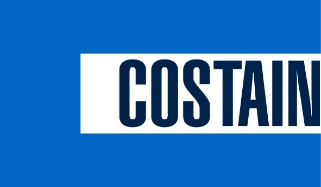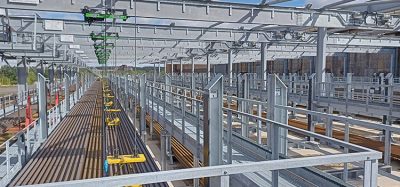CER results reveal €50 billion COVID-related losses for EU railway sector
Posted: 11 February 2022 | Elliot Robinson (Editorial Assistant - Global Railway Review) | No comments yet
The 2021 results of the CER COVID Impact Tracker show that no less than 33 per cent of turnover has been lost over the past two years due to COVID.


The 2021 results of the CER COVID Impact Tracker, carried out by the Community of European Railway and Infrastructure Companies (CER), have been released. It found that there were €50 billion COVID-related revenue losses of the rail sector in the European Union (EU27) over 2020-2021, around €27 billion for 2020 and around €23 billion for 2021.
Overall, no less than 33 per cent of turnover was lost over the past two years because of COVID. There was a more than €46 billion loss on passenger services (-41 per cent in 2020 and -36 per cent in 2021) and an almost €4 billion loss on freight services (-12 per cent in 2020 and -10 per cent in 2021).
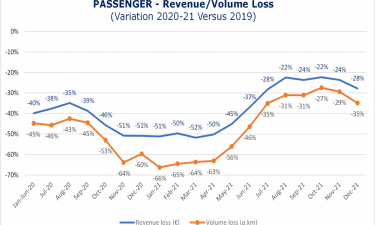

Credit: CER
The various parts of the rail system have been affected in very different ways. Passenger services suffered most with an extremely low winter season (from November 2020 to April 2021) at about -50 per cent in revenues (€) and -60 per cent in volumes (p.km). There was a relatively better summer season (May 2021 to October 2021) at around -25 per cent in revenues (€) and -30 per cent in volumes (p.km). The new winter season starts again with a downturn in November-December 2021, however it was less severe than in 2020 (December 2021, -28 per cent revenues / -35 per cent volumes).
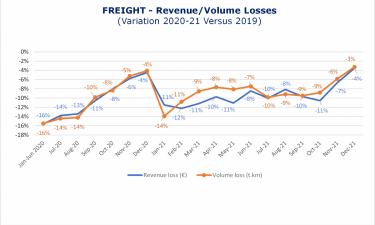

Credit: CER
After a collapse in January 2021, freight revenue losses stagnated at around -10 per cent (compared to 2019) until October 2021. As in 2020, an upswing appears towards end 2021, with almost back to normal figures. In its last data request, CER managed to collect volume data along with revenue data for the whole period of the pandemic. In freight, volume and revenue variations highly correlate. Average volume losses are around -10 per cent (-12 per cent in 2020 / -9 per cent in 2021).
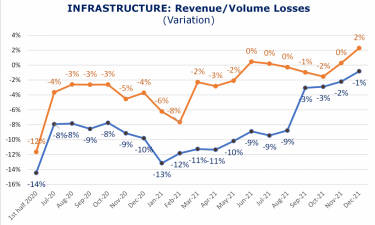

Credit: CER
While passenger volumes (in p.km) and freight volumes (in t.km) have dropped, train volumes (in train-km) seem to have returned to normal. However, infrastructure revenues remain in the red and consistently lag behind volumes. The figures also hide significant differences between countries, linked to insufficient compensation received for COVID-related reductions of Track Access Charges (TAC). If not addressed, insufficient compensation for TAC reductions and inadequate support to operations may jeopardise infrastructure managers’ maintenance capacity as well as the investment capability of all rail stakeholders in the medium and long term.
“The COVID crisis continued to have a heavy impact on railways last year, with commercial revenue down by 33 per cent in 2021 compared to 2019,” Alberto Mazzola, Executive Director for CER, said. “At the end of 2021, CER members resumed the same number of trains as in 2019, but with a reduced ridership (down by 35 per cent). This shows that CER members continued to provide services in 2020 and 2021 proving the resilience of the rail system, keeping people and goods on the move across Europe. However, the amount of rail revenue losses in EU27 reached the alarming level of €50 billion. Left uncorrected, this will have a long-lasting effect.”
Related organisations
Community of European Railway and Infrastructure Companies (CER)





